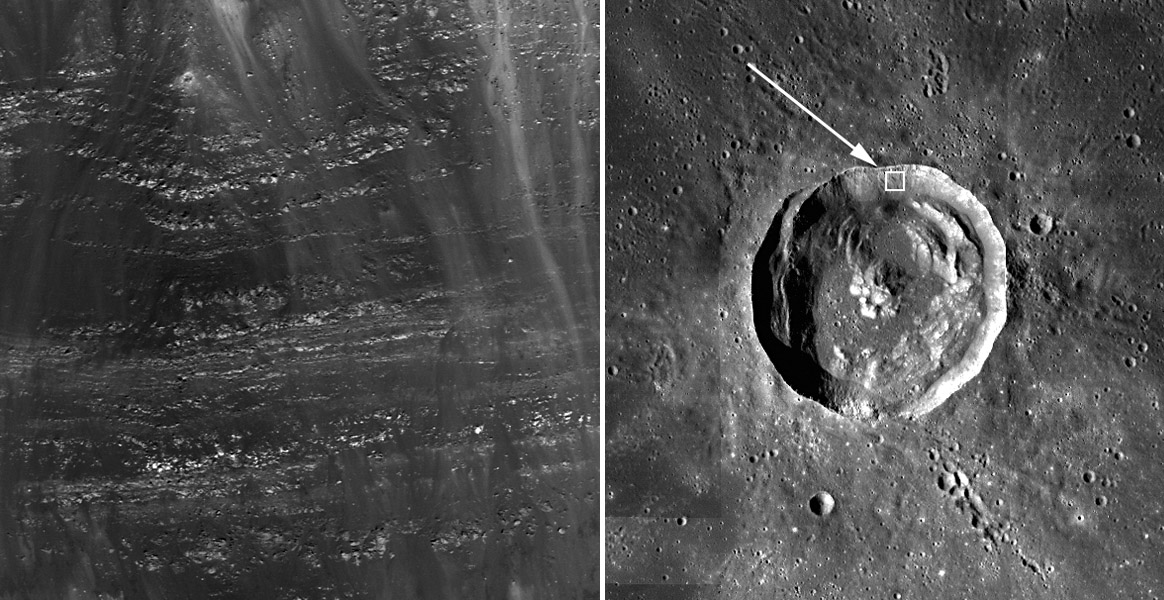August 6, 2011
Layers of History

images from Lunar Reconnaissance Orbiter (NASA/GSFC/Arizona State University)
Have you ever stood on the rim of Meteor Crater? If you have been that lucky you will remember seeing
rim rock layers tilted upward 30° to 40° and in some places nearly vertical, yet the same rock units are
horizontal a mile beyond the crater rim. Those rock layers were originally buried beneath the surface but
the impact bent then upward, raising them above the surface. So crater rims reveal otherwise invisible
layers penetrated by the crater. This new LRO view of the upper wall of Euler crater reveals buried layers
in the surrounding Mare Imbrium. There are dozens of separate bright layers, each a single rocky lava
flow, and the darker adjacent material may be regolith formed by small scale impact cratering before the
next eruption.This image demonstrates that maria are not formed by a small number of huge eruptions but
by a vast number of thin - 3-5 m thick - flows that cool down completely before the next eruption occurs.
It is estimated that maria are typically 3 to 5 km thick, about 1000 times more than individual flows seen
here, meaning that it may take about a 1000 flows to fill an impact basin. And when we look at ages of
the different parts of one mare the exposed lavas may range over 1 billion years. So, grossly guestimating,
1000 eruptions in 1,000,000,000 years gives an average interval between eruptions of a million years.
Wow! So even if the Moon were still volcanically active - and it isn't - the last eruption might have happened
when our ancestors roamed the plains of Africa in small hunter/gather bands.
Chuck Wood
Related Links
Rükl plate 20



